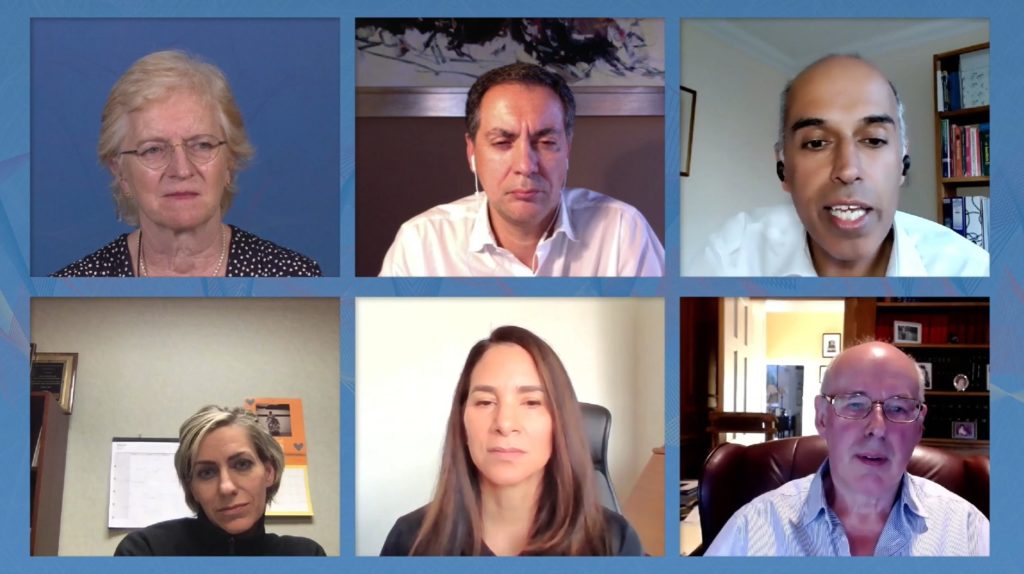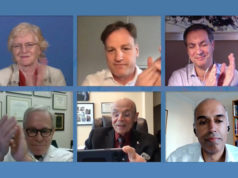
An international panel of venous and lymphatic experts has called for a multidisciplinary approach to identify the causes of severely swollen lower limbs and to improve the treatment of this common condition, which has been poorly managed all over the world. This is due to the numerous possible causes of the condition—which can require medical, lymphatic, or venous interventions. These were key messages to emerge from a roundtable discussion closing out the first day of the Venous and Lymphatic Controversies session of the Charing Cross (CX) 2021 Digital Edition (19–22 April, online).
The session included contributions from Erin Murphy (Charlotte, USA), Rebeca Reachi-Lugo (San Luis Potosí, Mexico) and Charles McCollum (Manchester, UK)—who detailed the varying causes and approaches to the treatment of severely swollen limbs occurring in their regions.
Registrants can view the roundtable session on demand here.
Attendees heard that identifying the cause of the problem is often made challenging by the difficulties in identifying who and what to treat. Both Murphy and Reachi-Lugo stressed the diverse possible causes of leg swelling, both systemic and local, with Murphy observing that causes of swelling are not always readily apparent upon examination.
Reachi-Lugo noted that the prevalence of lymphoedema in Mexico is currently unknown, but stressed the importance of understanding patient history and recommended the use of assessment tools such as ultrasound to eliminate potential venous pathology. However, McCollum stressed the importance of detailed investigation in younger patients with severely swollen lower limbs, but said in reality a large proportion of patients are elderly, overweight, or immobile, and may not require or wish to receive medical intervention.
The panellists were asked by session moderator Manj Gohel (Cambridge, UK) whether vascular specialists alone were equipped to manage the challenge posed by these patients. “It is like critical limb ischaemia, you need a multidisciplinary team,” commented Murphy. The point was echoed by McCollum, who said: “I think the vascular surgeon is central to this, but it is a multidisciplinary approach, and if you do not have the right team around you, you are not going to do very well.” Reachi-Lugo highlighted the role played by nutritionists in addressing this problem.
Elsewhere on the programme for the Venous and Lymphatic Controversies session were lively debates, considering the future role of open surgery for the treatment of superficial truncal reflux, as well as studies advocating concomitant phlebectomies after truncal ablation.
Steve Elias (Englewood, USA) and CX Executive Board member Armando Mansilha (Porto, Portugal) debated whether open surgery still has a role to play in the treatment of superficial truncal reflux, with Elias leading with the line that it is “time to move on from open surgery”. In response to Elias, Mansilha argued for “modern” approaches to open surgery, based on preoperative assessment and mapping with ultrasound. After the debate, audience members backed Mansilha’s argument by a margin of 64% to 36% in a live poll. The audience had earlier voted against the motion that studies advocating concomitant phlebectomies are not convincing, voting by a margin of 61% to 39% in favour of the argument put forward by Dan Carradice (Hull, UK).
Also in a session covering superficial venous controversies , Gohel introduced a new method for assessing the outcomes of superficial venous trials—the Venous TSQ (treatment satisfaction questionnaire), which is designed to “take the disease treatment process forward” and evaluate peri-procedural satisfaction from a patient’s perspective. He added that this novel system includes questions relating to peri-procedural information, pain, associated costs, symptom control, recovery, and several other areas, rectifying the “enormous reliance” there has been on occlusion rates and other anatomical outcome measures following superficial venous interventions.
All Venous and Lymphatic sessions are available to view on demand. Click here to register and access the recordings.







